This story is part of a semester-long project by USC Annenberg students spotlighting South LA. Stories featured on Intersections South LA have been written by students in USC Professor Robert Hernandez’s class. See more Southside Stories here.
By Ivana Banh
Walk into any restaurant on Slauson Avenue and you will most likely be offered greasy fried chicken, Chinese food, flavored with monosodium glutamate, or some sort of burger dripping with bacon grease.
Simply Wholesome is different.
The bright green building boasts glowing lights, floor-to-ceiling windows and a welcoming vibe. Inside the spacious restaurant, regulars are greeted with hugs from Owner Percell Keeling and the young staff. 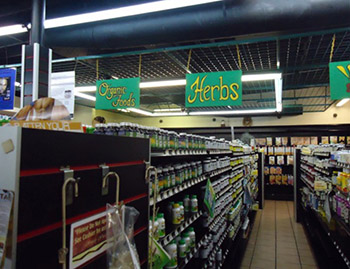
Upbeat jazz music plays loudly while blenders whip up protein shakes. The air is scented with blend of sweet potatoes, spices and freshly baked vegan cake.
As a former Redondo Beach health nut with a passion for distance running, Keeling knows what the human body needs to function properly. When he moved to Los Angeles in the 1970s, he immediately discovered that very few health-conscious restaurants existed.
The majority of South Los Angeles was African-American and tended to serve artery-clogging Southern meals. Keeling was often forced to drive out to South Bay, Hollywood or Marina Del Rey for more nutritious food.
His exasperation with junk food in the area would lead to something much bigger. One day, while he was voicing his complaints, a friend suggested he open his own restaurant. At the time, any type of establishment offering foods that were not deep-fried and bacon-adorned was practically unheard of.
“Everyone was saying to open the restaurant further west because black people don’t eat healthy,” Keeling said. “But I’m black and I eat healthy!”
In 1981, Keeling opened Simply Wholesome. For the first few years, the 1,000 square-foot restaurant offered a small selection of healthy sandwiches, salads and pastries. As the fan base rapidly grew, Keeling knew he had to expand in order to accommodate the diners. In 1995, he bought a 5,000 square-foot 1950s-style diner. He renovated the building to construct a dining area and a small health market.
Keeling and his staff work to ensure that the market is always stocked with organic cereals, frozen meals, coconut water and probiotic drinks. In addition, the market carries African-American hair product lines like Mixed Chicks and Kinky-Curly. Shoppers can also browse a wide selection of cookbooks and health literature.
Simply Wholesome’s extensive menu offers more choices than most health food restaurants. Many mistake Simply Wholesome as a purely vegan restaurant, but Keeling assures that meat dishes are also available. Their specialities include flaky Caribbean pastries filled with spiced chicken and vegetables, enchiladas, veggie burgers and hearty breakfasts. Those who prefer a more traditional meal often choose the “Down Home Sunday Dinner,” which consists of battered or grilled tofu, chicken or fish, candied yams, greens, rice and corn bread.
As for the beverage menu, 45 different protein shakes and smoothies are available. Rather than using premixed blends full of sugar and artificial flavorings, Simply Wholesome opts for fresh fruit, soy milk and coconut juice. Customers often pay a few extra cents for add-ons such as wheat germ, bee pollen and ginseng.
“All our shakes are made from fresh, real ingredients so they’re not bland like the other juice places out there,” Keeling said. “It may cost more to do it this way, but the return in business volume is all worth it.”
Simply Wholesome’s large and devoted fan base has proven Keeling’s business theories correct. The restaurant is now more than a convenient stop for those passing through the South Los Angeles area; Keeling has met diners from dozens of miles away that make Simply Wholesome their breakfast, lunch or dinner destination.
The restaurant may sit in a predominantly African-American area of Los Angeles, but it receives customers of all ethnicities and backgrounds. Over time, the menu has also been influenced by the diversities in the Los Angeles community. Caribbean, American, Mexican and African flavors work together to create Simply Wholesome’s plethora of healthy selections.
“This place is like a melting pot, the energy here – everyone is one when they come through the doors,” Keeling said. “Everyone is cool.”
The Pasadena and the University of Southern California communities have encouraged Keeling to open Simply Wholesome locations in their neighborhoods, but he declined their offers.
When it comes to expanding his business, Keeling prefers to do so in a unique building, not a cookie-cutter spot in a strip mall. The down-to-earth owner prefers to keep it simple rather than opening several mediocre locations, and he chooses to provide quality service and food in one hot spot.
His goal is to foster an environment in which both his customers and staff feel comfortable and at home.









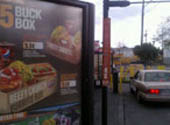 By Sean Patrick Lewis
By Sean Patrick Lewis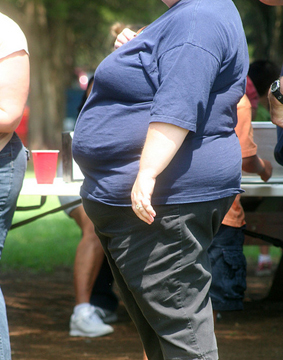 By Eddie North-Hager
By Eddie North-Hager By Eddie North-Hager
By Eddie North-Hager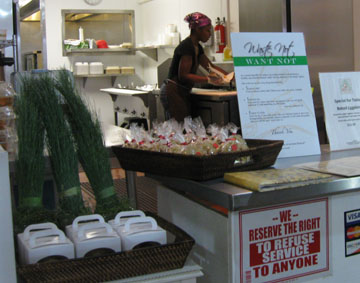 Latisha Jordan stands in front of the grill at Stuff I Eat heating up some tortillas.
Latisha Jordan stands in front of the grill at Stuff I Eat heating up some tortillas.  The plan, which seeks to help women overcome the barriers to the diagnosis and treatment of STDs, revolves around an expansion of the county’s “I Know” home STD testing program. The county is emphasizing the technology behind the “I Know” campaign—both in the test itself and in the way women can obtain the free testing kits.
The plan, which seeks to help women overcome the barriers to the diagnosis and treatment of STDs, revolves around an expansion of the county’s “I Know” home STD testing program. The county is emphasizing the technology behind the “I Know” campaign—both in the test itself and in the way women can obtain the free testing kits.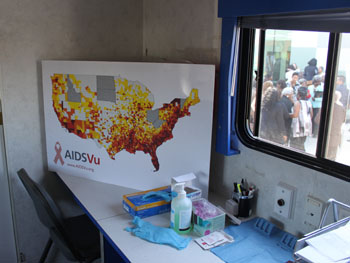
 This week, the United States Department of Agriculture and Department of Health released new dietary guidelines. Updated every five years, the food pyramid taught in classrooms around the nation is a beacon of healthy food choices.
This week, the United States Department of Agriculture and Department of Health released new dietary guidelines. Updated every five years, the food pyramid taught in classrooms around the nation is a beacon of healthy food choices. 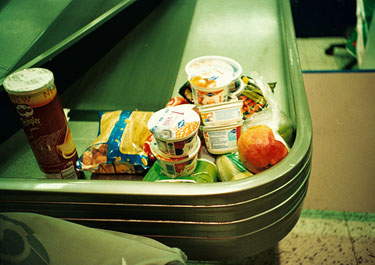 Grocery stores between the two communities had a gap just as wide as restaurants.
Grocery stores between the two communities had a gap just as wide as restaurants.





